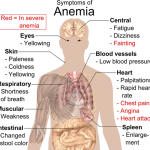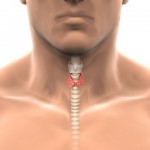Taking a sample of blood to determine a person’s health status has long been common practice. But that alone cannot be the decisive factor
70 percent of all diagnoses are based on the results of blood work. But how accurate are they? New scientific findings show: Blood levels alone cannot determine normal functioning of the organs and tissues. That’s why large numbers of patients slip through the cracks of (laboratory) medicine – they are unwell even though their values are in the normal range.
These individuals are often close to despair, because after months and even years of visits from one doctor to the other, and seeing specialist after specialist, they still don’t know what is causing their symptoms. It is not uncommon for patients like this to end up in my clinic. I will then often hear things like: “In the end I actually felt like a hypochondriac – like I were a fake leading their doctor to believe my symptoms”, or, others are made to feel as if though they were completely overexaggerating.
One particular case was that of a 31-year-old who dragged herself to work, indifferent and almost reluctantly, wondering what was wrong. She said that it all started with this fatigue that crawled into her life. This feisty and decidedly active patient – both at work and in her private life – felt completely exhausted already first thing in the morning even though she hadn’t changed her sleep habits. She had a dream job with good pay, flexible hours, and lots of variety. Moreover, she had really nice colleagues. But when her increasing fatigue, weakness and lack of motivation got to the point where it affected her leisure activities and she hardly had the strength to take her doggy out for a walk – which she used to combine with a sporty jogging run – she finally decided it was time for a physical check-up that would determine the cause of all this.
Initially, she went to see her family doctor, who examined her and ordered the usual blood work that was sent to the lab. When the results were in a week later, he explained that everything was in good order, that her bloodwork was textbook perfect.
Since her symptoms did not improve and on the advice of a colleague, she asked her doctor for a referral to an internist. She got the same answer there, and after that, she saw a neurologist, an allergy doctor, rheumatologist and endocrinologist, all of whom said the same – there are no findings, you are perfectly healthy.
Many people have been dealing with headaches, exhaustion and sleep disturbances for years, even though they are considered to be healthy.
The results are fine. So, is it just a case of “crazy”?
Millions of people experience the same thing. They have physical complaints, they endure headaches, exhaustion, fatigue, sleep disturbances, depression, digestive or cardiac problems –often for years and years. Those affected come out of one doctor’s office after the other, hearing the same thing, the same depressing, statement: “You are fine, there is nothing wrong”. And yet, without a doubt these people are sick, and suffering. But no sign of anything in the blood work…
The number of people with undiagnosed thyroid disease or diabetes, with chronic fatigue syndrome, burnout, depression, sleep disturbances and many other illnesses is on the rise. But so is the number of those who are labelled as “stress-induced psychosomatics”.
For patients, it does cause great psychological stress to be considered perfectly healthy, when in fact they are going through physical troubles that have a significant effect on the quality of their life and compromise their productivity. Just imagine: You are sick, the medical system doesn’t recognize the condition. And then it is suggested to the patient that they are just making it all up.
Generally, lab results should always be evaluated following a physical exam and an in-depth consultation between the doctor and the patient to discuss further steps for making a diagnosis.
The reference ranges provide values to which your healthcare provider compares your test results and determines your current health status. However, the true meaning of a test result—whether it indicates that you are sick or well, or at risk of a health condition, can only be known once all the other information your provider has gathered about your health, including the results of a physical exam, your health and family history, recent changes in your health, any medications you are taking, and other non-laboratory testing, have been evaluated.
Homeostasis – Blood is always looking for Balance
Many of us assume that the condition of blood reflects the body’s condition. But there are a number of studies that have found the body can have a focal – limited to certain tissues and organs – lack or excess of substances such as iron, iodine, Vitamin B or Vitamin D, even though the values of a blood sample taken in the lab are in the normal range. This indicates that a person is in good health when in fact a dysfunction could be in the offing or have manifested already.
The Peking scientist, lab technician and molecular biologist Menglin Li described: “Blood is subject to strict homeostatic control, that is, the body has a tendency to compensate for changes in substance concentrations in the blood”. Blood is a tissue that always tries to compensate for unbalanced situations. This means that our blood tries to counterbalance a lack of as well as an excess of something relatively quickly.
Because blood is so important for all organs, especially the brain and the heart, it does its utmost to supply the necessary substances. For example, if there is a lack of calcium, the blood will take it from the bones. Same goes for thyroid hormones. When there are not enough hormones circulating in the blood, they are taken from the peripheral tissue. This is why blood cannot really detect illness. Well it can, but not until the illness has been in place for so long that the blood can’t compensate for it anymore, or in the case of an acute problem where inflammatory markers skyrocket.
Wrongly defined Values: Critical for Patients
An almost equally big problem in analyzing blood values are the reference ranges. They help describe what is typical for a particular group of people based on age, sex, and other characteristics. Each laboratory establishes or “validates” its own reference ranges, thus reflecting differences that vary from lab to lab. They can be fixed too high – or too low – and this is why a lacking substance may not be discovered, even though it is clinically relevant, causing obvious symptoms already.
You and your provider can use reference ranges as a guide to what your results mean and to help make decisions about managing your health.
Some have found that the lower reference range for iron, for example, is fixed way too low. An underlying iron deficiency would not be picked up in patients this way, because values would be in the normal range, and we typically trust the lab report. Furthermore, the trace mineral iron is subject to drastic fluctuations during the day. A blood sample taken at a time X is then pretty much as reliable as that of the weather forecasting frog on a ladder.
Why is it that so many doctors base their diagnoses mainly on blood work when their results can be questionable? Well, it is an expression of high-tech medicine and frankly, trusting the blood results more than the symptoms is quick and simple. A comprehensive examination that looks at the person as a whole in his or her social environment is not the norm, the quick diagnosis based on symptoms and findings is.
The trace mineral iron is particularly subject to drastic fluctuations during the day. An accurate value is therefore as reliable as is a weather forecast from a frog on a ladder.
Well informed through Online Patient Forums
Not surprisingly, patients who are left wondering about their symptoms often start their own research. Patients are increasingly turning to the internet to get information about their symptoms. It is a known fact that seventy percent of Canadians go online to search for medical or health-related information,and it has been reported that the Internet, rather than physicians, is the first source of information for many people. The sharing of information in the respective forums is quite often of a high quality, that is, many patients are obviously scientifically up to date, also as far as the reference ranges of blood values are concerned.
It is important to have a doctor who listens to their patients, because it’s just not fair to outright reject the internet as a source of health misinformation. True, you will find a lot of ignorance and superficial knowledge, but there is also absolutely scientifically approved medical information to be found as well.
The support and information found on a patient forum was also what helped my patient find out, after years of suffering and seeing one doctor after the other, what was missing in her body: Iron! For a year and a half, she had agonizing complaints such as fatigue, exhaustion, drop in performance and trouble concentrating. She started to withdraw more and more, isolated herself from her friends and was about to go into a depression.
She soon recovered after an iron replacement therapy. Her work, hobbies and leisure activities were just as much fun as before. Even running with the dog, to her four-legged companion’s delight.
Inaccurate values:
Seven substances that are particularly susceptible to flawed interpretation
Iron Deficiency –responsible for Anemia, but not only
Iron is a very central and vital element that fulfills essential tasks in the body. As such, iron is responsible for the transportation of oxygen in the blood. The oxygen we absorb with each breath in our bodies is bound to iron in the red blood cells and is transported in this way to each cell through the whole blood circulation.
But iron has many other functions too, it strengthens our immune response, mental and physical performance and vitality, it ensures healthy skin and healthy hair and nails. The organism cannot make iron on its own, that is why the metallic element must be absorbed through food.
Iron Deficiency can have fatal consequences because it may lead to anemia and manifest in severe physical and emotional harm. Typical symptoms of an iron deficiency include anemia, fatigue, exhaustion, drop in performance, lack of concentration, immune weakness. But there are also numerous other illnesses and dysfunctions that the affected, and many doctors, do not initially associate with a lack of iron, which can lead to physical and emotional ailments, impacting the quality of life significantly. Among these are depression, sleep disturbances, lack of motivation, restlessness, complaints of circulation and many more.
Based on the most recent study conducted in 2011, only approximately 3% of Canadians have anemia (including all forms of anemia). However, 9% of women aged 20 to 49, and 13% of females aged 12 to 19 have iron-deficiency.
Lack of iron does not only cause lethargy, it impacts the immune system, the skin, hair and nails.
The problem with lab tests: Unfortunately, there is no simple, inexpensive, reliable laboratory test for iron deficiency. For iron, the most reliable test is the serum ferritin assay. This test measures the amount of ferritin, and reflects the amount of iron stored in your body. Some medical guidelines suggest normal ferritin levels are between 12 – 300ug/L – this is a HUGE range that allows many individuals with low iron to go untreated. For instance, a ferritin level of 13ug/L will not be flagged on blood work. Other medical guidelines, like the one included below from the Ontario Association of Medical Laboratories (OAML), provide optimal ranges:
| Serum Ferritin (ug/L) | Interpretation |
| <15 or <12 (children) | Iron deficiency |
| 15-50 | Depletion of stored iron, probable iron deficiency |
| 51-100 | Reduced iron stores, possible iron deficiency |
| 101-300 | Iron deficiency unlikely (in the absence of inflammation) |
While ferritin levels should probably be above 100ug/L to support optimal health (including hair growth, thyroid function, immune health, etc), fact is that scientists assume the lower norm value is set way too low.
Important: Those potentially affected by iron deficiency, particularly women and athletes, can use a very old wisdom of our grandmothers and great grandmothers: Look in the eyes! If the cornea of the eye has a bluish tinge then an iron deficiency is very probable!
To optimize iron absorption, combine iron rich meals or iron supplements with foods high in vitamin C or a vitamin C supplement. Avoid having coffee, tea, and dairy products with iron rich meals and iron supplements as these inhibit iron absorption.
The TSH value – a very special Problem
TSH belongs to the hormones that are essential to determine whether or not the thyroid is working properly. A change in the thyroid gland’s hormone production will usually change the TSH level. When the thyroid gland is sick, it can lead to depression, sleep disturbances, digestive issues, cardiac circulation problems, skin problems and many other complaints.
The problem with lab tests: For the TSH, the reference values are again the very big problem. There has been a bitter feud going on between professors, as to what value should be set for the upper limit. With respect to the lower limit everyone is more or less in agreement. The upper limit is set at 4 mIU/L, but quite a few think it should be at 2.5 mIU/L, with anything 2.5 – 4.0 mIU/L considered “at risk”.
Important: A Doppler Ultrasonography will show whether the thyroid gland functions too fast or too slow. The moment it is not well supplied with blood, the thyroid can naturally not function well, and this is seen in the ultrasound image. If it is profusely supplied with blood on the other hand, then this could rather raise suspicions of thyroid hyperfunctioning.
The thyroid, our butterfly organ, influences nearly all bodily functions. An accurate analysis is therefore particularly important.
Iodine Deficiency – one of the World’s most common Health Problems
Iodine, like selenium and manganum, belongs to the trace minerals that have to be taken with food. Up to 70 % of Iodine is used in the thyroid gland to form the two thyroid hormones Thyroxin and Thyronin, which have a central function in the metabolism.
The problem with lab tests: Many doctors feel that iodine requirements are met by the enrichment of foods, thus eliminating iodine deficiency. This is why Iodine does not get so much attention anymore, and iodine deficiency remains undetected in many people.
Important: It is possible also to have too much iodine. A diet of processed food with added iodine almost everywhere can lead to thyroid problems.
Vitamin B – when the Body Stores are exhausted
The B-Group vitamins play a prominent role in nerve and brain function and influence also a person’s sleep-wake rhythm as well as all vegetative functions of the body.
The problem with lab tests: A special risk factor is Vitamin B12. This vitamin is essential for our neuronal functions. The lower limit was set based on pernicious anemia. German Professors presented in 2008 in the German doctor’s journal, that neurological blackout, not only polyneuropathy, but also severe depression can set in much sooner.
Sufficient vitamin B12 levels greater than or equal to Health Canada’s recommendation of 148 pmol/L were found in 96% of Canadians. That is the lower limit. But according to Myriam Muhm, author of the book “The blood value Lie”, depression can set in already at 220 or 295 pmol/L.
Important: A person’s Vitamin B status can be verified in a urine test. Any deficiencies can be counterbalanced with corresponding supplements.
Vitamin D – there’s often not enough of it
Vitamin D, which cannot be built up in the body to its active form without the help of sunlight is a very important vitamin for the skin, the bones and the heart.
The problem with lab tests: The lower limit of Vitamin D should be higher, at 100, 125 or 150nmol/L – there are some differences in opinion on this. Most Canadians are considered to have sufficient levels of vitamin D for bone health at 50nmol/L. This is compatible with vitamin D intakes that meet the Recommended Dietary Allowance.
What is really striking is that in a one-time survey of about a quarter of Canadian pediatricians in 2015 it was found that there were 149 cases of children with severe vitamin D deficiency in a year, including 48 rickets cases — and two deaths. The disease which we thought had been eliminated for decades, is still there. Why? Kids are protected by their parents with very high sun protection factors in the summer. Parents believe that they are doing something good, but in fact their kids aren’t getting get any vitamin D anymore, because their skin can no longer synthesize it. This is why it is important to let kids play outside more, in the open. Not to say that they should be exposed to the full midday sun, especially not in tropical areas. But they should have the opportunity to play outside in the morning and afternoon with bare body parts such as arms and legs.
Adults with vitamin D deficiency can end up with loss of minerals in the bones and pain in the spine.
Important: Supply natural Vitamin D.
Office people, seniors and dark-skinned people are prone to vitamin D deficiency. The best medicine: Regular short sunbaths – but please without sun protection factor, because it hinders absorption
Calcium – the most plentiful mineral in our body
Calcium belongs to the positively charged ions. It is well-known that it is of great importance for bone metabolism. It also plays an important role for the teeth, nerves and muscle cells. Calcium levels which are both too high or too low can be dangerous for a person’s metabolism and impact important functions. Calcium is found first and foremost in milk, milk products, eggs and soy beans.
The problem with lab tests: The reference ranges do not pose the problem for calcium. American studies show that the calcium value is basically not a parameter to determine if indeed there is a lack of calcium. Because even a serious case of osteoporosis can show calcium levels in the blood to be in the normal range.
Important: Unfortunately, calcium levels cannot be detected in blood. This is why the only alternative is: Get a regular bone check done starting at age 40 and see if osteoporosis may be looming. Then the plan of action is: sports, sports and sports again – exercise, exercise, exercise. That is the most natural and best protection against bone loss.
A breakfast rich in calcium with milk and milk products can influence bone metabolism positively
Glucose – an important source of Energy for all
Glucose is an important parameter of sugar metabolism which should give some indication of whether or not diabetes mellitus is present. When the levels are too high, it is likely a sign of diabetes. People who suffer from diabetes have a relative or absolute insulin deficiency. Furthermore, the effectiveness of the insulin on cells can be limited which is referred to as insulin resistance. Due to diabetes mellitus, blood sugar is elevated; as well, the kidneys eliminate sugar, so that it can be measured in the urine. An untreated case of diabetes can lead to severe damage of the cells and medical conditions of the eyes, kidneys and other organs.
The problem with lab tests: For glucose it is again about the reference ranges. Studies in Israel have shown for years, which was then confirmed in other countries, that the lower value should not be set at
6.1 mmol/L, but 4.7 mmol/L. Diabetes management in Canada is certainly unique in some ways, vs. other countries, but wherever you live, it’s important that people with diabetes understand the importance of good diabetes management. Current Diabetes Canada guidelines recommend a fasting blood sugar between 4.0 – 7.0 mmoL/L, vs. 4.4 – 7.2 mmol/L from the American Diabetes Association. It was recognized that diabetes in Germany is diagnosed relatively late – often years after the illness has taken hold.
Important: Glucose levels can be measured in the urine too. Particularly when the symptoms are itching nipples and itching soles of the feet, a test to check your blood sugar is advisable. These are apparently clear symptoms of elevated blood sugar levels and thus the beginnings of Diabetes mellitus, according to Miryam Muhm.
Lab Results – the weak spot in today’s medicine
Those little numeric values on blood results that are used today to differentiate between sick/in need of therapy or healthy/send home, can decide the fate of millions. All too often, on the basis of these numbers, sick people without a diagnosis and therapy are brought to the verge of despair.
Miryam Muhm believes that there are millions of people who fall through the cracks of the medical system based on their lab results alone. She herself studied medicine for a few years and kept asking herself how she would have acted had she become a doctor. How to deal with patients who have the typical signs and symptoms of a thyroid hypofunction, but whose corresponding blood levels are all okay because they are actually in the currently valid normal range.
If you continue to educate yourself and look at Pubmed studies for example – these are scientific and medical studies that are collected in the central library of the American Government for medical and scientific research results – you would know, even as a doctor, that there are differences of opinion, specifically with respect to the TSH values. And that a bitter dispute exists in the medical profession about where the upper limit for TSH should be fixed in order to differentiate a normal thyroid from an under functioning one.
A Doppler Ultrasonography may be more reliable here, because it gives a relatively exact indication of whether the thyroid works too slowly or too fast. But then what if you had a patient that showed a slow thyroid despite normal blood values, would you prescribe the necessary hormone therapy? There are some doctors in Austria that do, although they represent the minority. For them, the symptoms are more of a guidance to diagnosis than are the blood results.
The problem: Scientific knowledge can change too
What do scientists say who have thought about the problems of wrong blood values – like Dr. John Doux?
Dr. John D. Doux who did some research in the Palo Alto Institute, shows in his studies that many substances which we can analyze in the blood do not necessarily reflect the condition of the body. As he underlines in his publication “When Normal is Not”, thyroid hormones can lie in the normal range but still be lacking in certain tissues in the body and cause the illness there, in spite of normal blood values.
Many other scientists are also of the opinion that medicine is on the wrong track if it uses the blood of all things as the most diagnostically conclusive medium for a diagnosis. It is true that disease shows up in blood, but usually not until very late or in an absolutely acute state. Even though there are cases in which in an acute pancreatitis which could be fatal, the corresponding substances or blood parameters are within range. You have to know that blood always tries to compensate for deficiency symptoms as well as excesses.
Then again other scientists have found that patients can show increased levels of iron, even though iron may be deficient in their brain. For researchers who seriously grapple with this subject, blood is actually the most unsuitable medium for making a proper diagnosis. A further problem is also presented by incorrect reference ranges. This is particularly obvious in the case of B12, but also for fasting glucose.
Already 10 years ago, Prof. Wolfgang Herrmann, who was at the time the Director of the Institute for Clinical Chemistry at the medical faculty of the University of the Saarland, pointed out that many neurological blackouts manifest in the body before a B12 deficiency is seen in the blood. As already presented in the article, this can mean in concrete terms that many patients have to deal with the serious neurological consequences of a B12 deficiency, even though their blood value is “okay”, just because the current lower limit has been fixed far too low. It is currently set at 148 pmol/L, even though Prof. Herrmann pointed out in the doctor’s magazine already in 2008 that it should be set at 325 pmol/L in order to recognize neurological problems based on blood.
Likewise, German Diabetes experts advise that it often takes many, many years before Diabetes is identified. Even though studies from numerous countries suggest that the lower limit to exclude diabetes should be set at 4.7 mmol/L and not at 6.1 mmol/L, that country still insists on using the old reference ranges.
What is really important in making the Diagnosis?
Are we basically not on the wrong track in trusting blood values exclusively? Shouldn’t more emphasis be placed on the symptoms?
Blood values should serve as a clinical guidance and not the diagnosis par excellence. However, it is much easier to rely on blood values than it is on an array of symptoms which can be vague, meaning that they could match several disease pictures. The results of a blood analysis make it easier for the physician compared to a taking a careful case history followed by an informed interpretation of symptoms. This does require time, and thinking of it, physicians in Canada spend about eight minutes per patient on average, and in chronic cases even only three minutes. This is hardly enough time to carefully discern the symptoms of a patient.
A consultation with the patient about their symptoms helps the physician in analyzing the lab results
So, what can patients do who are still in the dark after numerous, numerous visits to doctors’ offices, because their supposedly normal blood values confirm that they are in perfect health?
Well, first and foremost, I would say do not despair, because it is not your fault. Rather, the reason is to be found in a medical system that takes a very long time to process and implement scientific results.
In the absence of any definite medical diagnoses, it may be time to take matters into your own hands. Provided of course any life-threatening illnesses are ruled out. For example, by searching for relevant information on the internet. I know many patients who have gone this route and were able to get a handle on their health by taking Vitamin D, B12, iron or other minerals and vitamins.
Still, I want to emphasize that the holistic aspect of health is not to be underestimated. And that goes deeper than simply determining what’s missing at the cellular level. Why is your body not absorbing a mineral properly, and how come your thyroid is overactive or underactive? How you think and how you feel affects you at the physical level, and it affects different people in different ways. Mind over matter, as Einstein once put it.
A homeopathic constitutional remedy will help bring your body back into balance, so that it can heal itself. Treatment is often accompanied by a nutritional analysis and / or a live blood cell analysis. If you have not been able to get any answers from your lab results, then this approach is worth a try for sure. Depending on what symptoms you are presenting with, I may recommend one or two supplements along with the constitutional remedy to help you heal. As well, individualized lifestyle recommendations are included in your package.
I would be happy to see you at the clinic or answer any questions you may have. Just give us a call at (519) 603-0505, or book your appointment online.
In health,
Irene SchwensHom, DHMHS, C.Tran.
Owner / HomeopathRegistration #15241
K-W HOMEOPATHIC MEDICINE
……………………….………AND WELLNESS CLINIC
751 King Street West, Suite 310
Kitchener, ON N2G 1E5
T (519) 603-0505
F (519) 603-0506
“The physician’s highest and only calling
is to make the sick healthy, to cure, as it is called”
— Dr. Samuel Hahnemann, §1, Organon of the Medical Art —

















